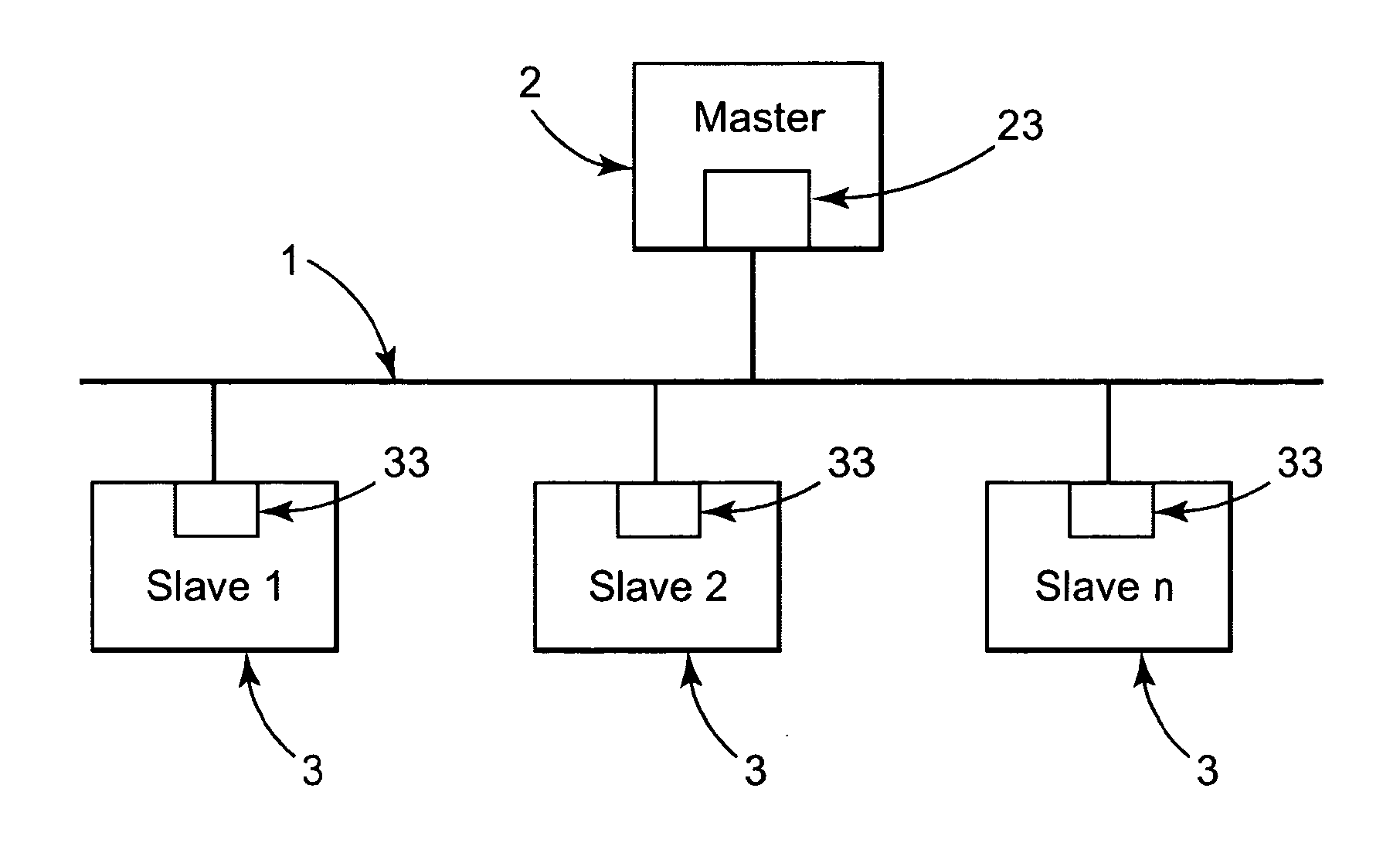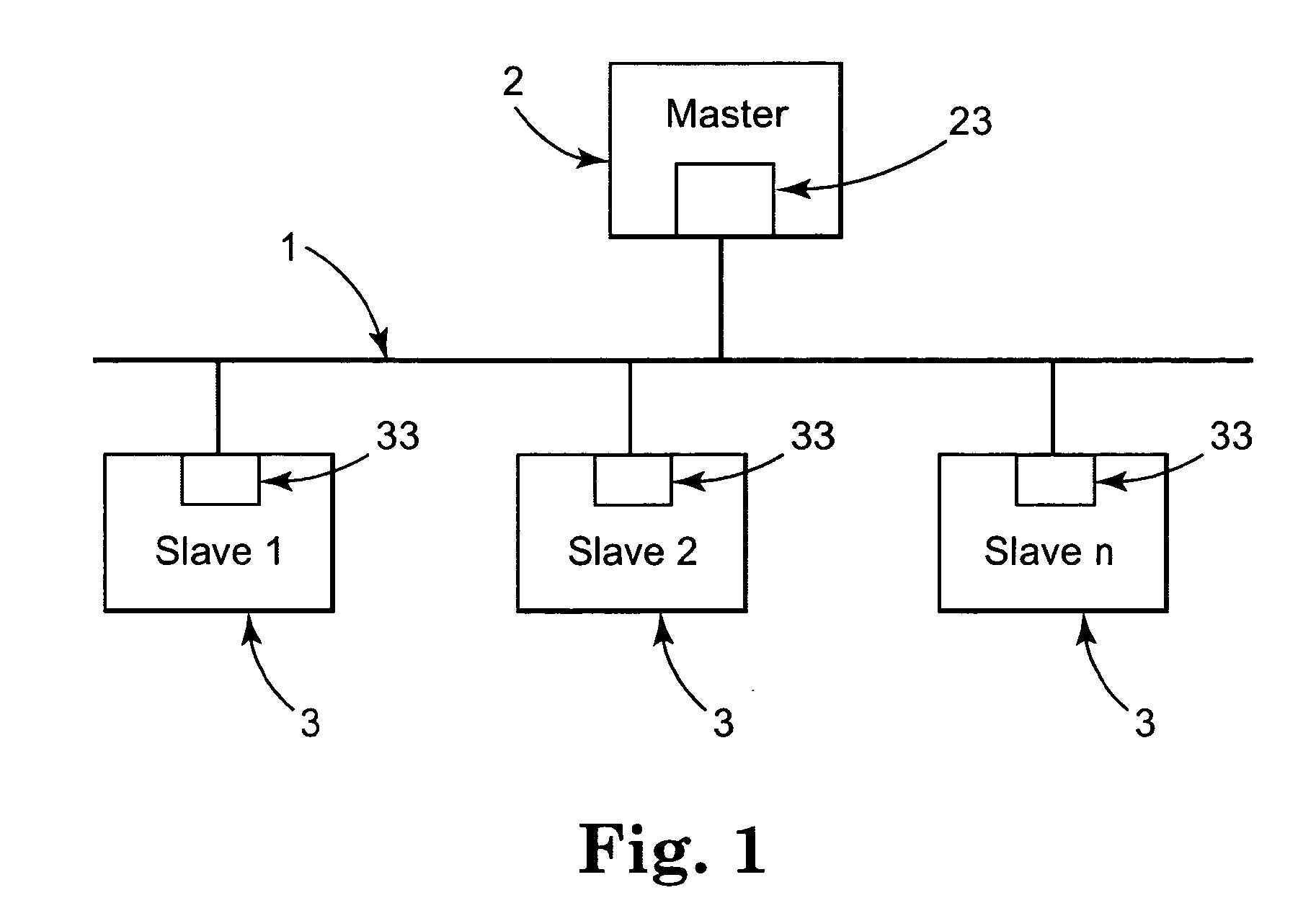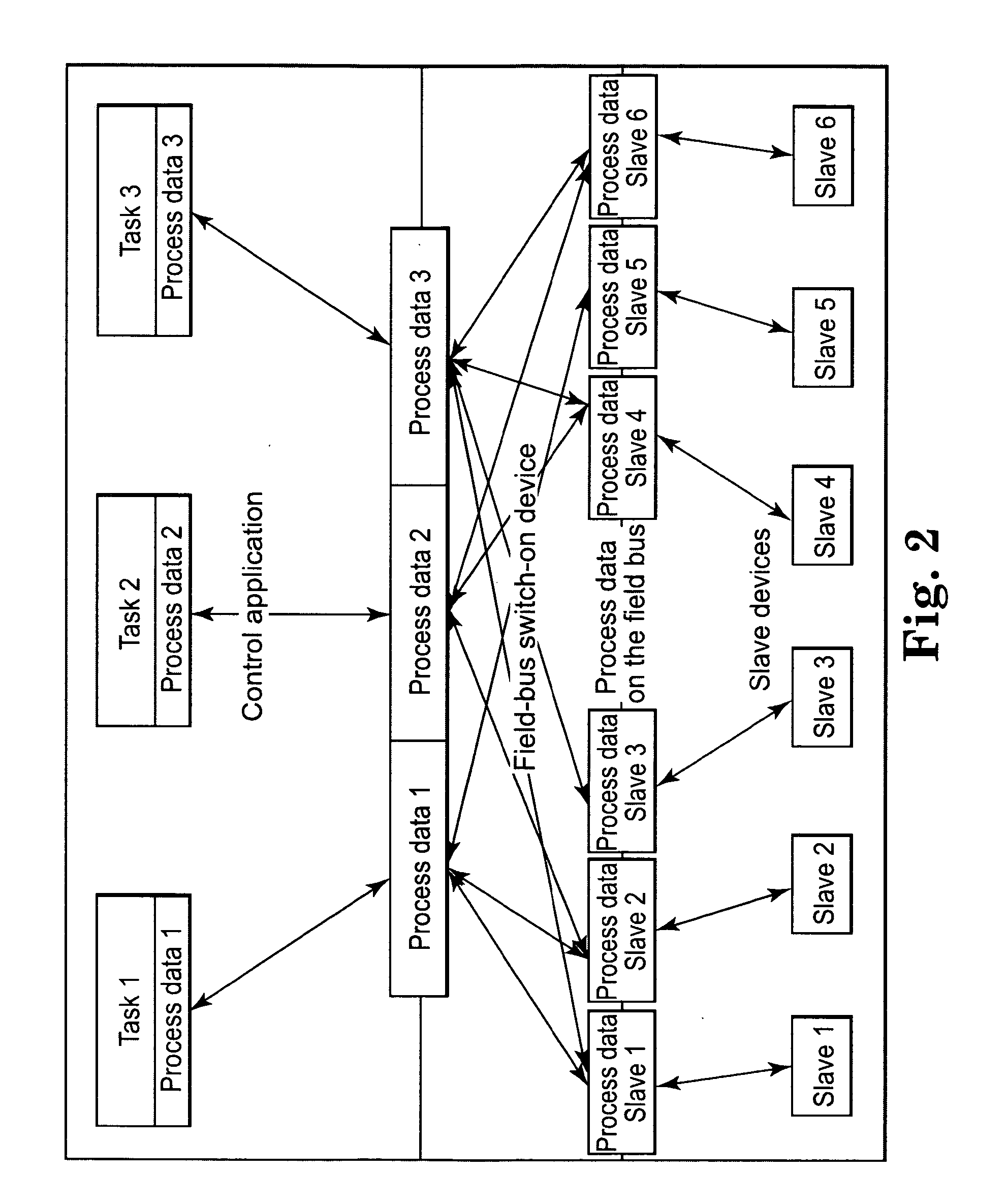Data transmission method, serial bus system, and switch-on unit for a passive station
a data transmission and serial bus technology, applied in the direction of transmission, memory adressing/allocation/relocation, programme control, etc., can solve the problems of reducing the efficiency of data transmission, requiring a high processing effort, and unable to achieve optimal bus use, so as to achieve the optimal bus use, reduce the effort of data processing in the active station, and save considerable time
- Summary
- Abstract
- Description
- Claims
- Application Information
AI Technical Summary
Benefits of technology
Problems solved by technology
Method used
Image
Examples
Embodiment Construction
[0035]More and more field-bus systems are being used in automation technology, wherein distributed devices of the peripheral machines communicate with automation, engineering, and visualization systems by means of a field bus. One such field-bus system is shown in FIG. 1.
[0036]The field-bus system has a serial bus 1, which can be, e.g., an electrical line, an optical fiber, or also a radio cable. All of the stations are attached to this bus 1, wherein a distinction can be made between active and passive stations. The active stations on the field-bus system are the master devices 2, which determine the data traffic on the bus. One such master device is, e.g., an industrial PC, which operates as a process control computer in a manufacturing process. This master device 2 has a bus access token and can output data onto the bus 1 without an external request. The passive stations on the bus system are the peripheral machines, e.g., I / O devices, valves, drives, and measurement transducers....
PUM
 Login to View More
Login to View More Abstract
Description
Claims
Application Information
 Login to View More
Login to View More - R&D
- Intellectual Property
- Life Sciences
- Materials
- Tech Scout
- Unparalleled Data Quality
- Higher Quality Content
- 60% Fewer Hallucinations
Browse by: Latest US Patents, China's latest patents, Technical Efficacy Thesaurus, Application Domain, Technology Topic, Popular Technical Reports.
© 2025 PatSnap. All rights reserved.Legal|Privacy policy|Modern Slavery Act Transparency Statement|Sitemap|About US| Contact US: help@patsnap.com



